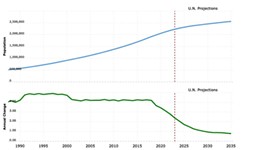Redistricting 2001
Putting Texas Politics on the Map
By Mike Clark-Madison, Fri., April 6, 2001
What citizens want is common sense. They want to vote in the same races as their neighbors. They want candidates who live near rather than far. They want politicians who look like them: ethnic, rural, Republican, or not. And they're sick of the same old losers, lifers, and water-carriers. They want competitive districts, preferably drawn by responsible adults who understand principle.
The districts we have now, crafted in 1991 and then cleansed by numerous trips to the courthouse, do a less-than-great job of meeting these criteria (which are also, technically, requirements of state and federal law). Some problems are predictable outcomes of having the same old losers, lifers, and water-carriers help draw the lines. And the peculiar rules of the game -- which differ for the Texas House, Texas Senate, and U.S. Congressional districts -- make common sense less common than citizens might believe.
Overall, the most predictable changes point toward an increase in the power of the generally conservative, monied suburbs, and a consequent decrease in influence for rural communities, the inner cities, and (despite its growth) South Texas.
Got something to say on the subject? Send a letter to the editor.








